Introduction
Obsessive Compulsive Disorder is an anxiety disorder that is represented by uncontrollable, repetitive and unwanted thoughts.
It is also characterized by ritualized behaviors that one feels compelled to execute (Sahley, 2006).
Assistance is available as there are numerous treatments and self-help strategies that can be applied in order to reduce the symptoms of the disorder.
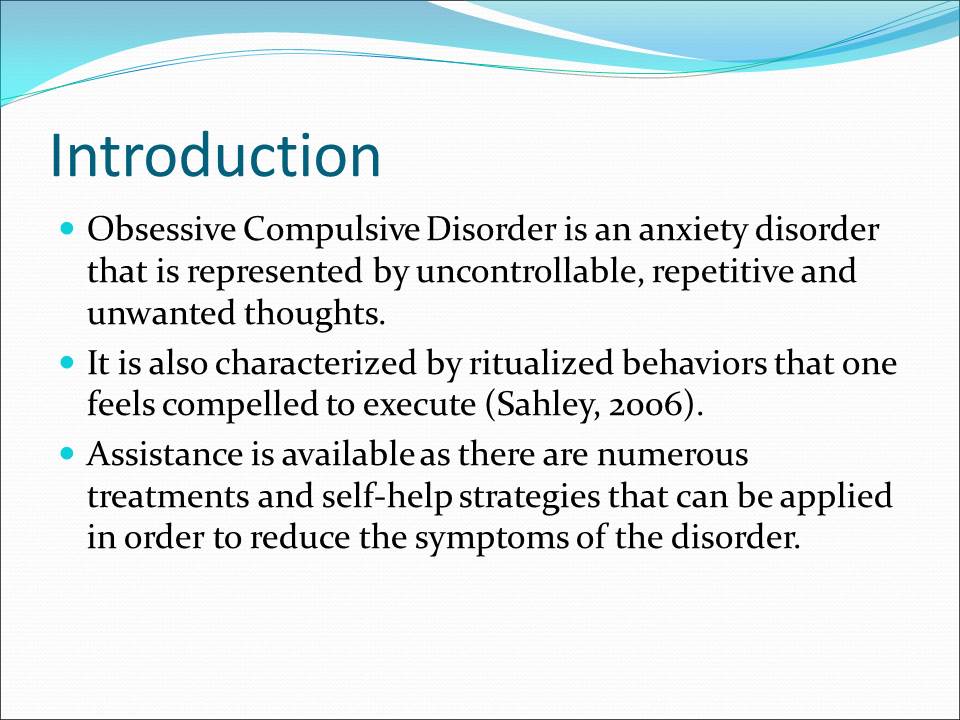
Causes
- Compulsions are rituals or behaviors that one feels driven to perform again and again (Connelly, 2008).
- Inherited- May run in the family.
- Involuntary impulses.
- Change in lifestyle.
Sufferers can be categorized into:
- washers;
- Doubters;
- Sinners;
- checkers.
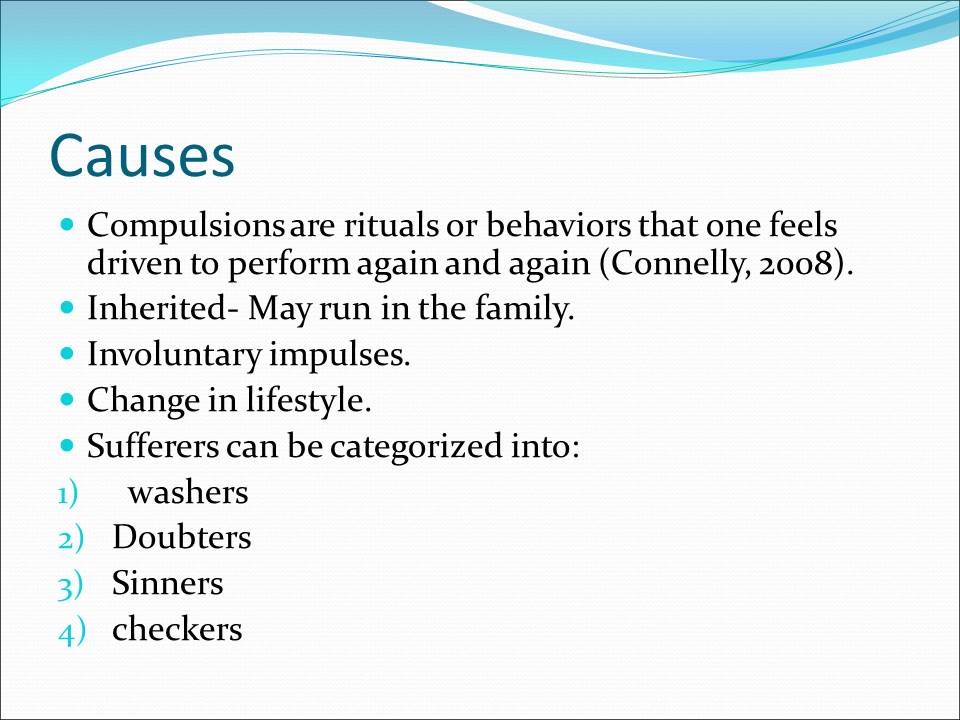
Symptoms
Thoughts
- The fear of being contaminated by germs or contaminating others.
- Violent thoughts and images or disturbing sexual explicit images.
- They are afraid of causing harm to others and themselves.
- Extreme focus on religious and moral aspects and ideas.
- Dread of not having things they might need or losing them.
- Symmetry and arrangement where they feel that everything must be just right.
- Extreme attention to things that are considered lucky or unlucky which results in superstition.
Behaviors
- Engaging in rituals triggered by religious dread or excessively praying.
- Double-checking of things thought to be potential causes of harm such as switches and appliances excessively.
- Arranging things in a particular style.
- Spending many hours doing laundry, dishes and grooming themselves.
- Repetitive checking on those people they love to make sure they are safe.
- Repeating certain phrases or words, counting or doing other irrational things to decrease anxiety.
- Mount up things they do not have to use such as old newspapers or magazines.
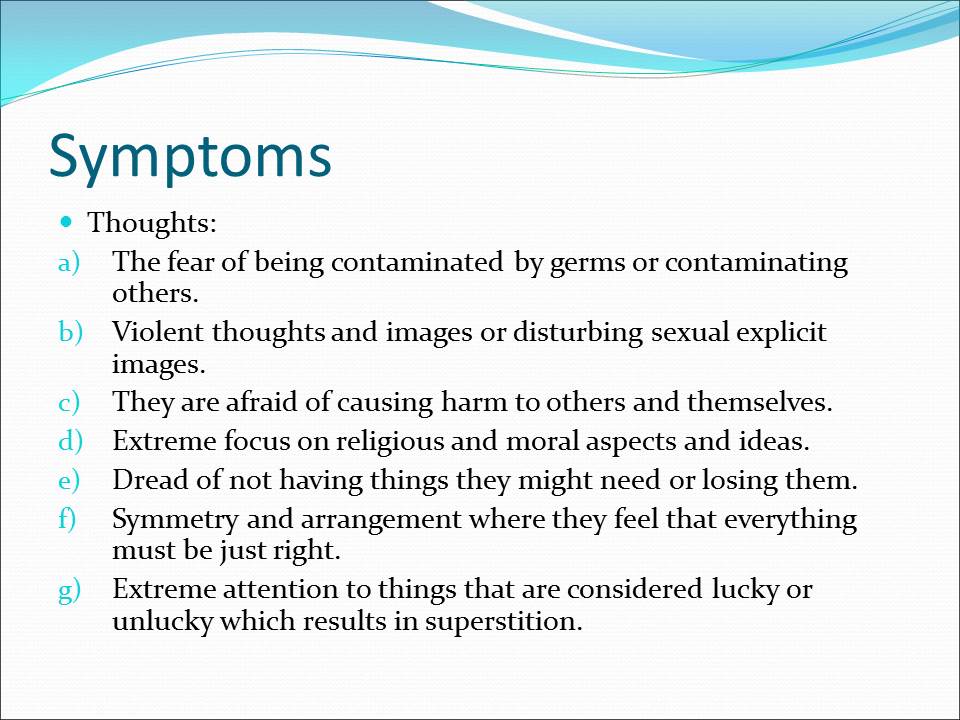
Therapy
- Most research support the treatment of the disorder through cognitive-behavioral therapy as they say it is more effective (Harvard Women’s Health Watch, 2006).
- Exposure and response prevention (Smith, 2010).
- Cognitive therapy (De Silva & Rachman, 2004).
Re-label – The person should recognize that the intrusive urges and obsessive thoughts are a result of obsessive compulsive disorder.
Reattribute – The person should realize that the strength and intrusiveness of the urge or thought is caused by obsessive compulsive disorder. It is most likely connected to a biochemical inequity in the brain.
Refocus – The person should focus his attention on something else for some time or do another behavior.
Revalue – The person should not take the obsessive compulsive disorder notion at face value as it is not of importance in itself.
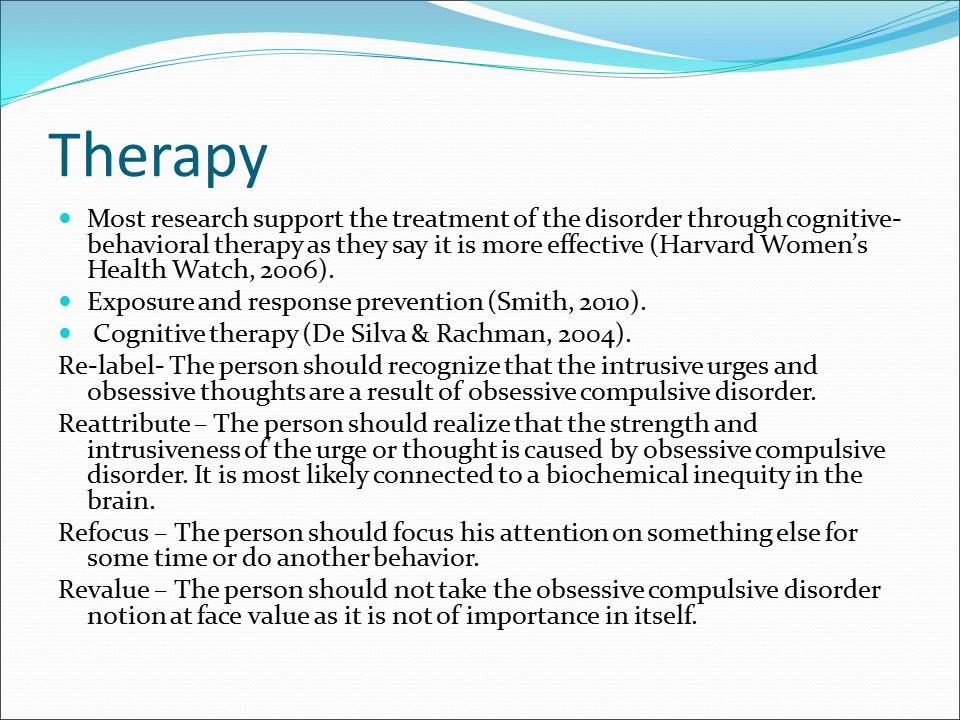
Medication
Antidepressants can be used in combination with therapy in order to treat the symptoms of obsessive compulsive disorder (Braverman, 2004).
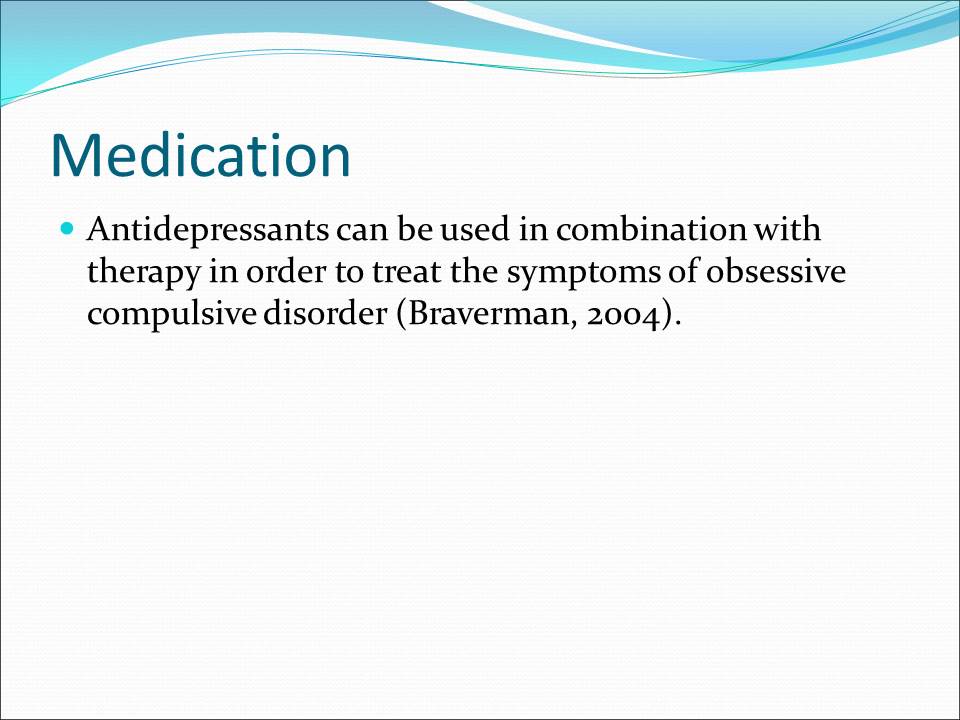
Group Therapy
Interactions with other obsessive compulsive disorder sufferers provide support, hearten and reduce the feelings of isolation.
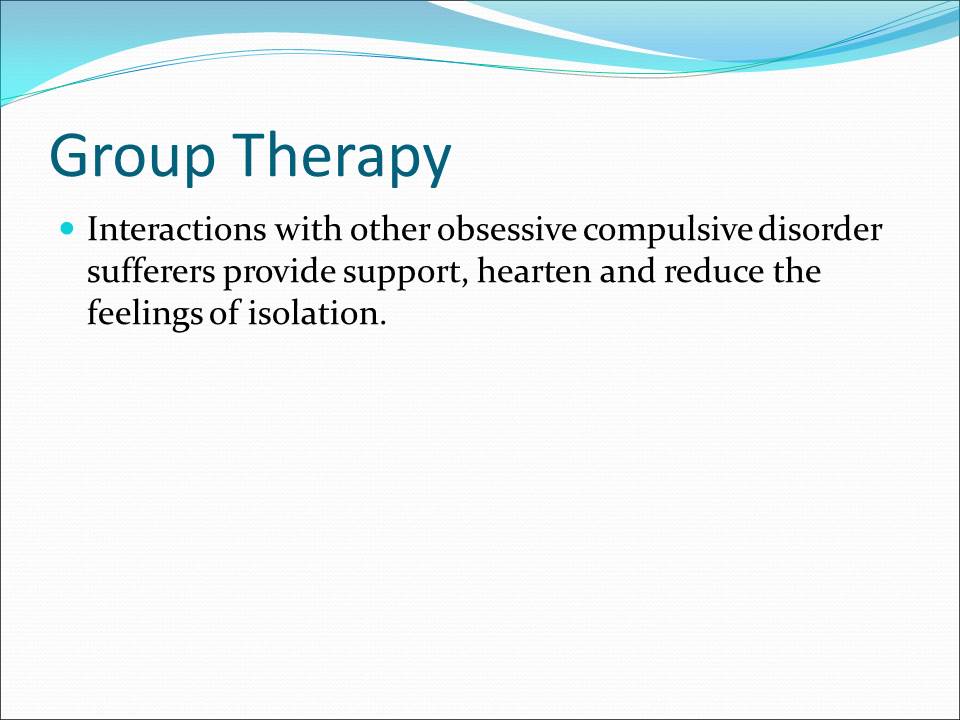
Family Therapy
Family life is more fruitful and fulfilling if the family does not have to constantly deal with obsessive compulsive disorder. If obsessive compulsive disorder is severe, it can make working regularly impossible or even play a role in family life (Coombs, 2004).
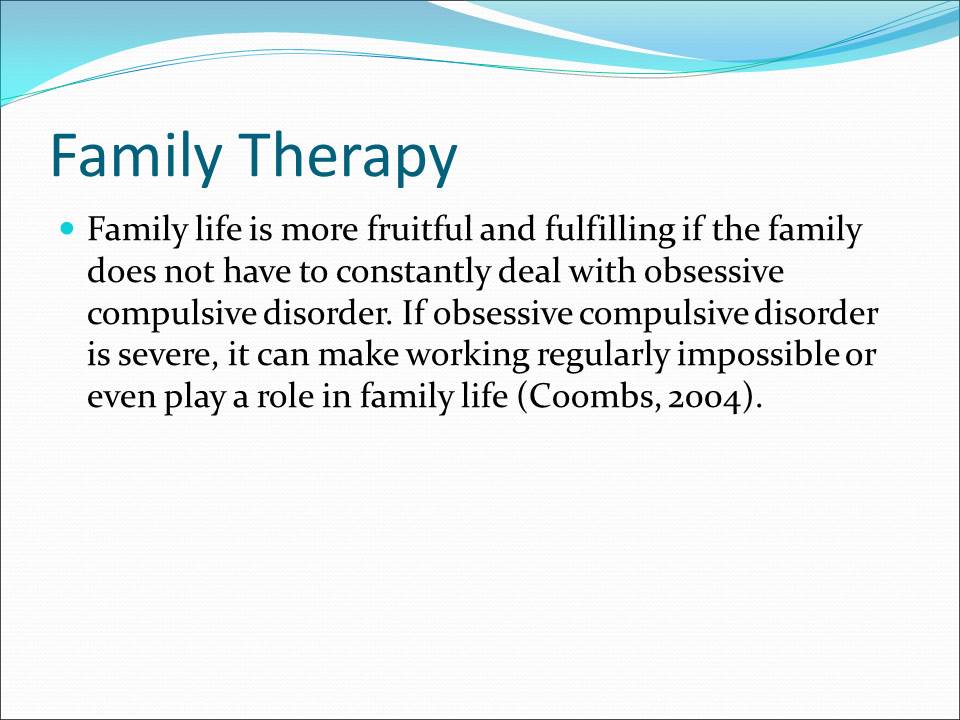
Propagation of Obsessive Compulsive Disorder
Each time the person does this; the belief that the ritual stopped something horrible from happening is strengthened. This has the effect of exerting pressure on the person to do the rituals again and again (Sahley, 2006).
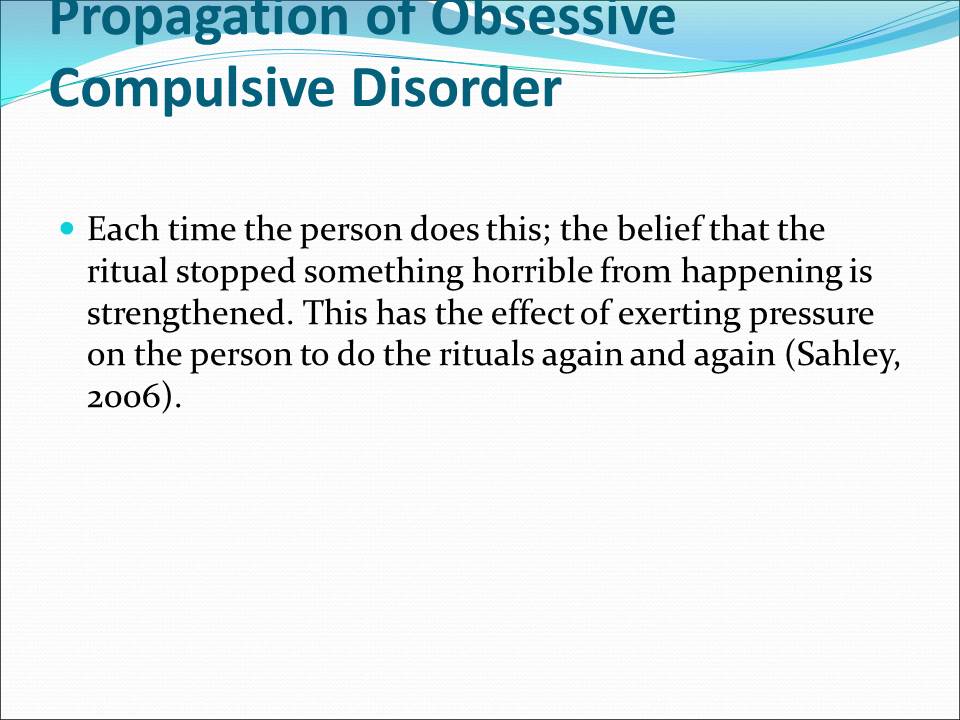
References
Braverman, E. (2004). Nutrients for Treating Obsessive Compulsive Disorder. Life Extension Foundation.
Connelly, P. (2008). Complementary medicines that may assist in managing obsessive compulsive disorder. Journal of Australian Traditional-medicine society, Vol. 14 (30).
Coombs, R. H. (2004). Family therapy review: preparing for comprehensive and licensing examinations. New York: Routledge.
De Silva, P., & Rachman, S. (2004). Obsessive-compulsive disorder: the facts. Oxford University Press.
Harvard Women’s Health Watch. (2006). When Thoughts Become Obsessions. Harvard Women’s Health Watch.
Sahley, B. J. (2006). Obsessive Compulsive Disorder. Pain & Stress Publications
Smith M. & Jaffe E, May, 2010 Obsessive- Compulsive Disorder. Web.